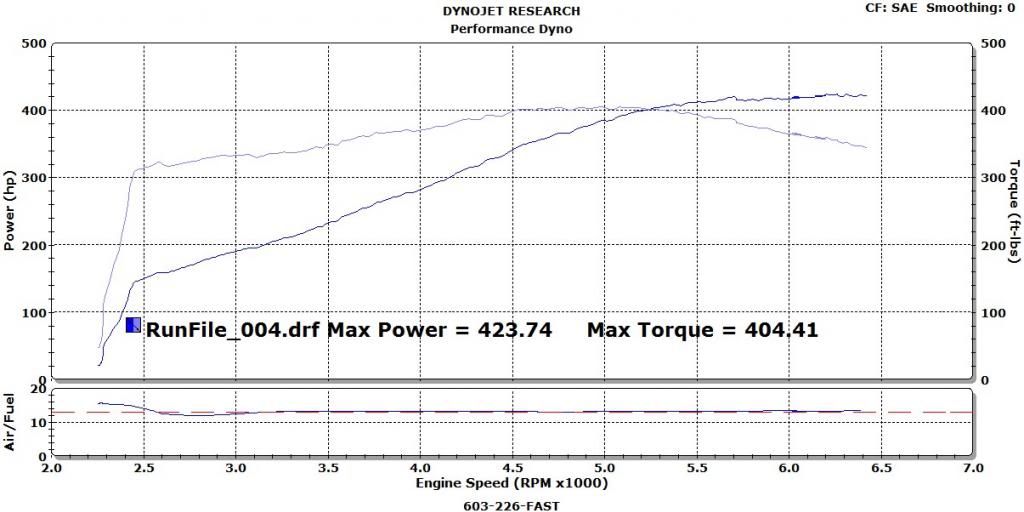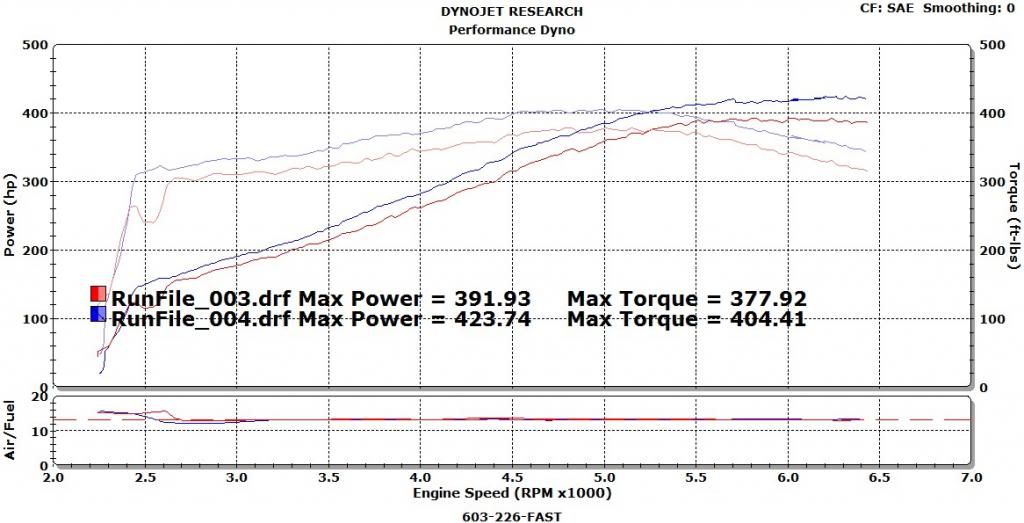1967 GTO LQ4 (L92/LS3) swap
#61
congrats on the numbers! no doubt the mani's are holding you back a little, but it never ceases to astound me that you can get 450+ hp with little more than a cam swap.
that BOP rear will certainly hold... until you drop the clutch and hook at a good rpm. FWIW, the 8.5" 10 bolts would easily hold the power levels you're looking at, and they're much cheaper than the more popular rears (12 bolt, 9", etc.).
that BOP rear will certainly hold... until you drop the clutch and hook at a good rpm. FWIW, the 8.5" 10 bolts would easily hold the power levels you're looking at, and they're much cheaper than the more popular rears (12 bolt, 9", etc.).
#62
Well, I don't plan on running slicks or even drag radials at the track. So I guess on street tires the rear should be fine. If not though, I'll definitely look into an 8.5" 10-bolt. When did BOP start using (or in what vehicles did they use) the 8.5" rear over the 8.2"? Is there an easy way to identify them if you were junkyard digging?
Thanks,
Jeff
Thanks,
Jeff
#64
I'd personally run the 8.2 until you grenade the thing, unless you're concerned w/ losing an axle on the highway or something.
Here's some info on the 8.5" rear (see post 12). They're pretty easy to spot. I hear the 71-72 Buick/Olds A body would be best, as they've got bolt in axles (i.e., no c-clip) and control arm bracketry. That style has cutouts at the 3 and 9 o'clock positions to easily identify it from other diffs.
Here's some info on the 8.5" rear (see post 12). They're pretty easy to spot. I hear the 71-72 Buick/Olds A body would be best, as they've got bolt in axles (i.e., no c-clip) and control arm bracketry. That style has cutouts at the 3 and 9 o'clock positions to easily identify it from other diffs.
#65
What year are your manifolds? Using the edel mount and able to retain the z bar is awesome. Im running edel headers and with a lowered car I have 2.5" at lowest point to ground --thinking about going with a factory manifold.
#66
I'd personally run the 8.2 until you grenade the thing, unless you're concerned w/ losing an axle on the highway or something.
Here's some info on the 8.5" rear (see post 12). They're pretty easy to spot. I hear the 71-72 Buick/Olds A body would be best, as they've got bolt in axles (i.e., no c-clip) and control arm bracketry. That style has cutouts at the 3 and 9 o'clock positions to easily identify it from other diffs.
Here's some info on the 8.5" rear (see post 12). They're pretty easy to spot. I hear the 71-72 Buick/Olds A body would be best, as they've got bolt in axles (i.e., no c-clip) and control arm bracketry. That style has cutouts at the 3 and 9 o'clock positions to easily identify it from other diffs.
-Jeff
#67
Like most, I'd guess there's the potential for 10-20 HP gain with long-tube headers, but it's a tough decision whether it's worth it for a car like mine that's mostly street driven and only taken to the track a couple times a year on "street nights". The fit, spark plug and starter acces, and zero maintenance (header bolts coming loose) of manifolds is very appealing to me. Then again, 10-20 HP is very appealing as well. The battle continues....
-Jeff
#68
I know this is a old thread but how's this bad boy doing?? Have you changed anything up yet. Can you give some insight on what works or what you would recommend for a fellow 67 GTO/LeMans LS swap.. I'll be getting my 5.3/4L60E this weekend..
#69
The only thing I've changed so far this winter is the intake tubing. I fabbed up a cold air intake plate for the fender well, which came out decent. And I moved the MAF sensor closer to the air filter and out from behind the radiator so it doesn't read inaccurately hot. But I've got a hydraulic clutch kit from Keisler that I'm about ready to install. I'm hoping it'll help my clutch chatter. This car has been cursed with clutch chatter since I bought it 18 years ago......thru 2 different engines, 2 different transmissions, 2 bell housings, and who know's how many clutches! The only constant was the Z-bar, so I'm hoping the hydraulic clutch helps. There's other benefits too though if it doesn't.
Let's see....insight on what works? I was pretty happy with all my choices. I love the F-body manifolds, I'm very happy with the cam, and the wiring harness from PSI was awesome. If you need a harness, PSI is the way to go from my experience. Jon gets great reviews on here all the time from others as well.
If you have any specific questions that this thread doesn't answer, let me know.
Here's some pics of the cold air intake. Excuse the dust, she's been sitting in the garage all winter.
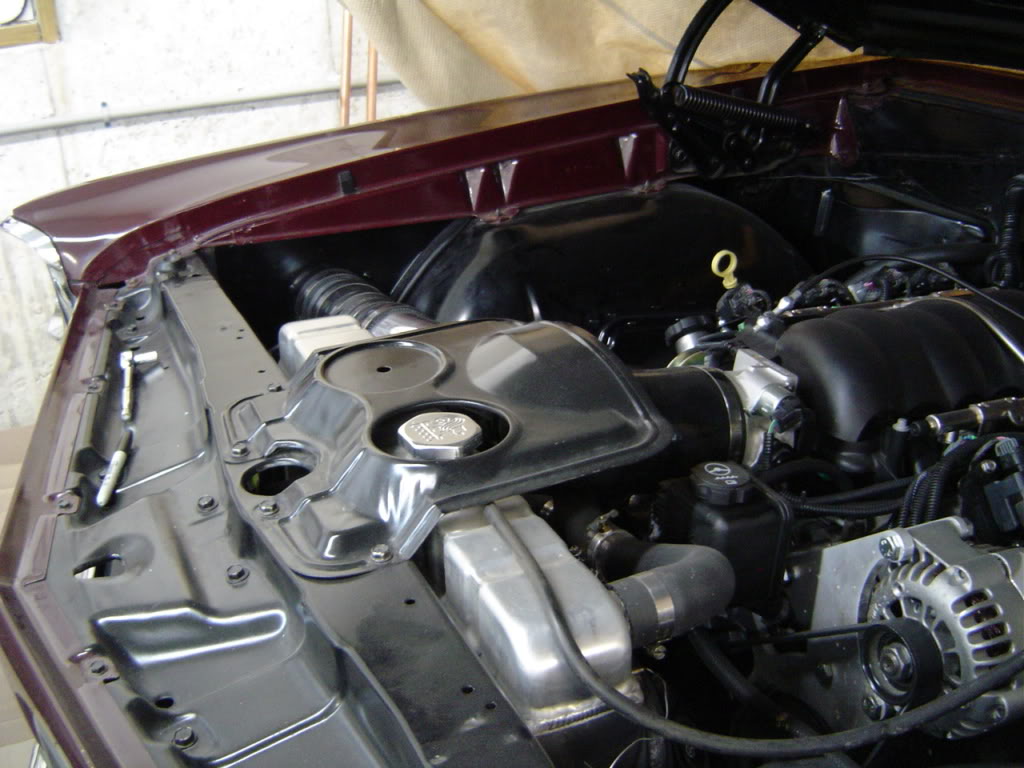
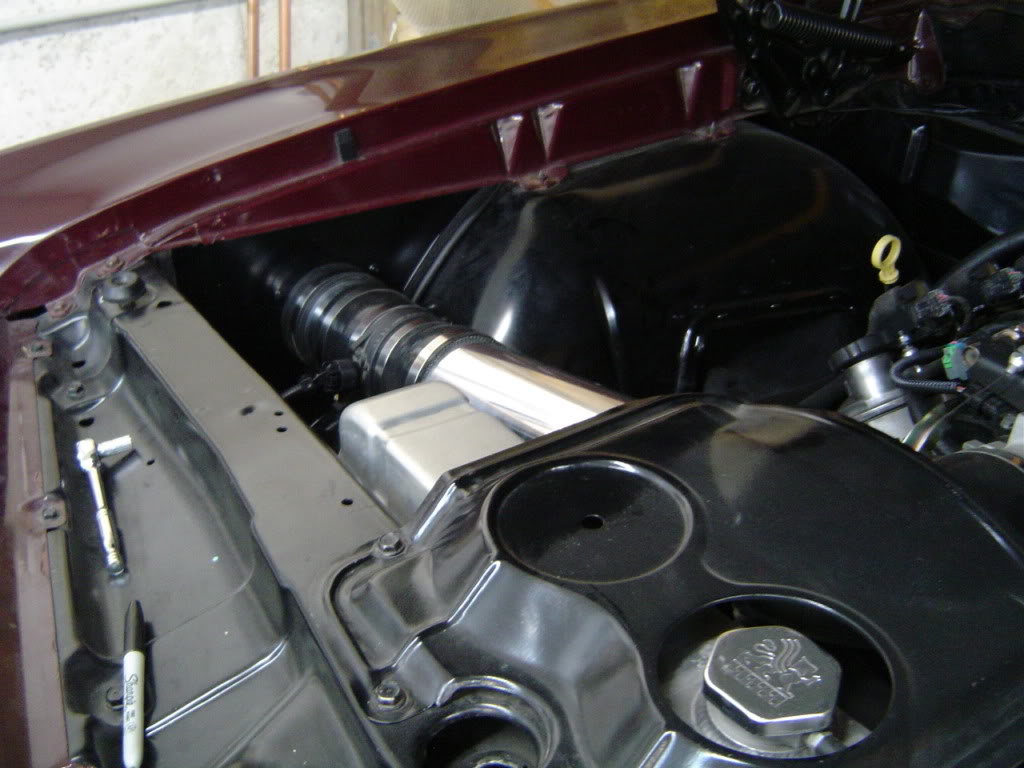
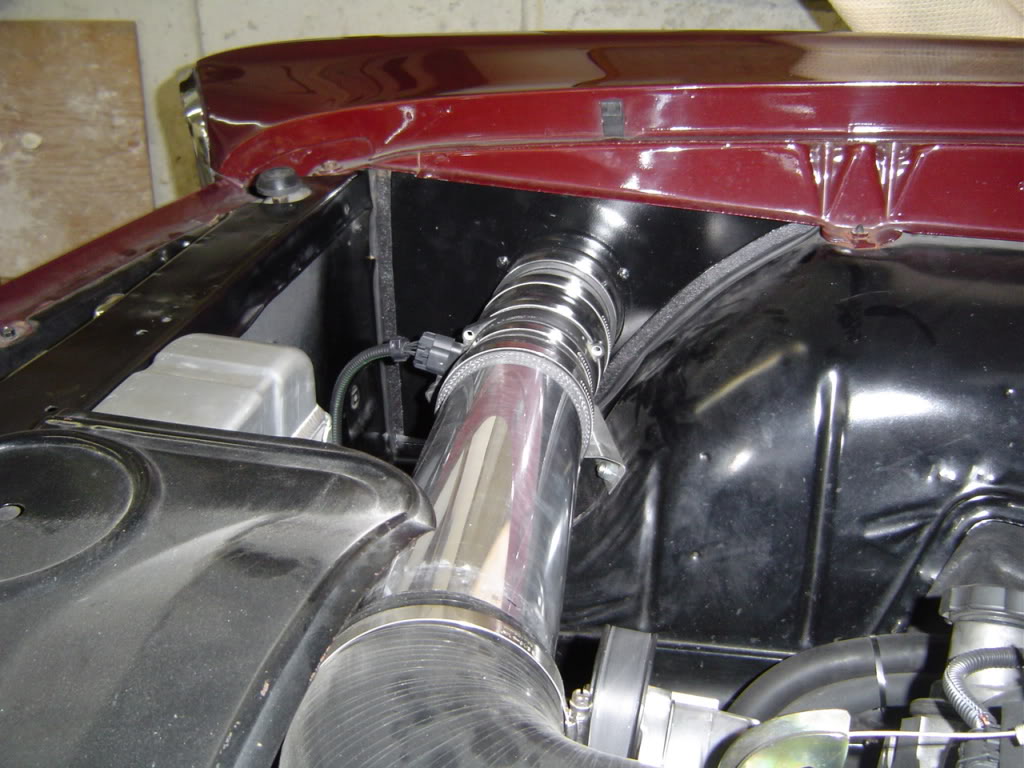
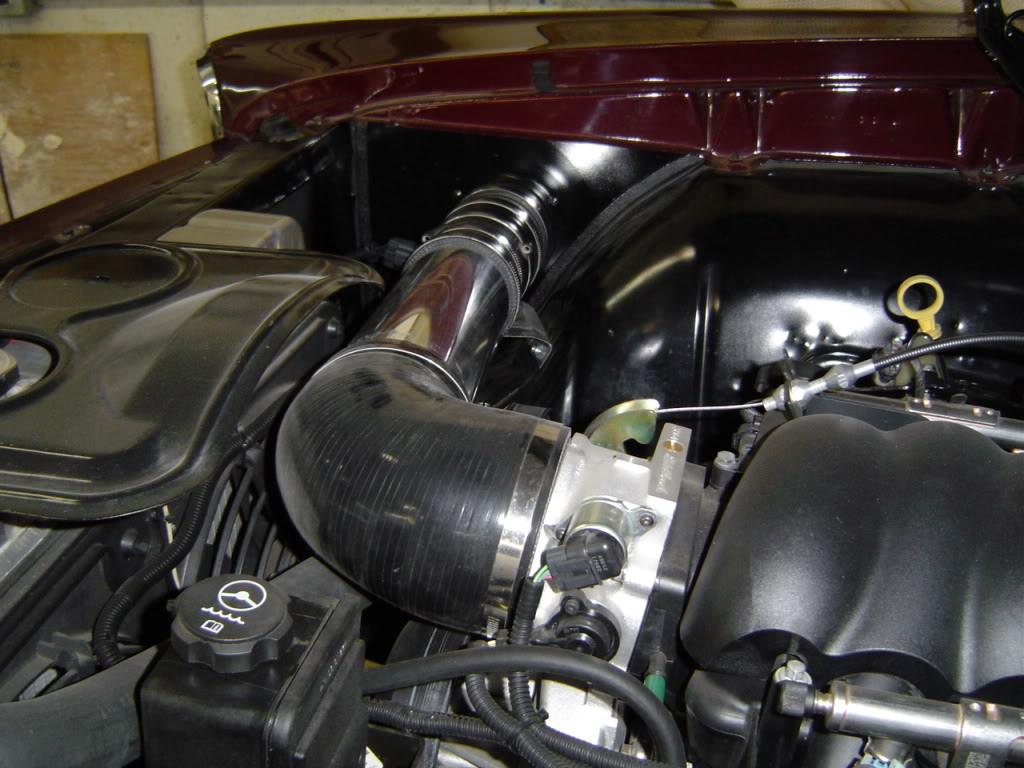
Thanks,
Jeff
#74
Wow, what a fun night last night! I'm very impressed and happy with the Dyno numbers. 391 peak RWHP. And that's with stock F-body manifolds, and only 87 octane which limited us to 22 degrees timing. Power is very flat between 5500 and 6500.
I've done it a few times before, but standing next to your car (or any car) during a 4th gear WOT dyno pull is pure motorhead glory.
If felt so good to stand on it and power-shift 2nd and 3rd last night. What a great feeling after months of work.
Final question: How long will my 8.2" 10 bolt Pontiac rear last?
-Jeff
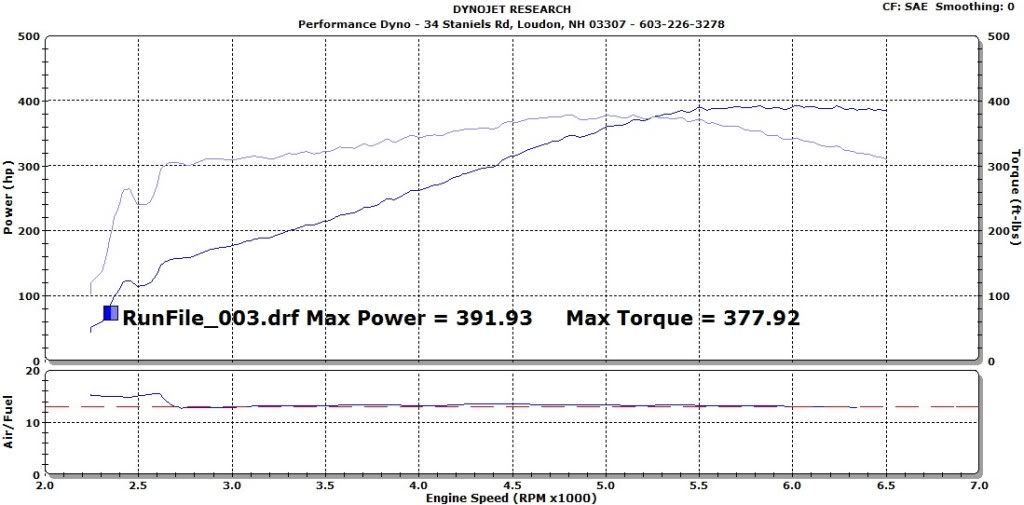
LS motor overlayed on Pontiac 400 dyno pull. Interesting how good the 400 was between 3k and 4k RPMs. Better than the LS!

I've done it a few times before, but standing next to your car (or any car) during a 4th gear WOT dyno pull is pure motorhead glory.
If felt so good to stand on it and power-shift 2nd and 3rd last night. What a great feeling after months of work.
Final question: How long will my 8.2" 10 bolt Pontiac rear last?
-Jeff

LS motor overlayed on Pontiac 400 dyno pull. Interesting how good the 400 was between 3k and 4k RPMs. Better than the LS!

#75
The main mod was simply the cam. I used this one.
http://www.cranecams.com/product/car...detail&p=24170
Highlights are the 234/242 duration which made great power, but not the best for driveability, espeically on a flat tappet. (Hence the LS swap). It bucked pretty bad below 2,000 rpm.
Other than that, everything was mostly stock Pontiac. I ran the stock 670 heads with some DIY pocket porting and Harland Sharp 1.6 ratio roller rockers. And I sent the stock Q-jet to Jet Performance for a Stage II build. Oh, and electric fans, Pontiac "factory headers", and 2.5" exhaust.
Bottom end was stock. And I think it could handle 5500rpm no problem, but that's just my opinion. Who knows what the longevity would be. I only had maybe 10k miles on that setup.....tops.
http://www.cranecams.com/product/car...detail&p=24170
Highlights are the 234/242 duration which made great power, but not the best for driveability, espeically on a flat tappet. (Hence the LS swap). It bucked pretty bad below 2,000 rpm.
Other than that, everything was mostly stock Pontiac. I ran the stock 670 heads with some DIY pocket porting and Harland Sharp 1.6 ratio roller rockers. And I sent the stock Q-jet to Jet Performance for a Stage II build. Oh, and electric fans, Pontiac "factory headers", and 2.5" exhaust.
Bottom end was stock. And I think it could handle 5500rpm no problem, but that's just my opinion. Who knows what the longevity would be. I only had maybe 10k miles on that setup.....tops.
#76
Thanks. Dynos of a Pontiac 400 are very rare on the Pontiac forums. Instead gross flywheel numbers are posted without any proof. Never know what the peak or average numbers are for a given combo like here. Reminds me of the 1980s.
#77
I think today it's the opposite. The LS motors are probably under-rated.
#78
#79
I have a 66 GTO to restore after I finish this 67 GT Mustang. I'm planning an LSX swap as well but will probably do an automatic in the GTO since it's an original column shift car. It looks like it's pretty painless, I can't wait!
Your car looks great, I'm in NH as well.
Your car looks great, I'm in NH as well.

#80
Cool! Where in NH? I'm in bow.






